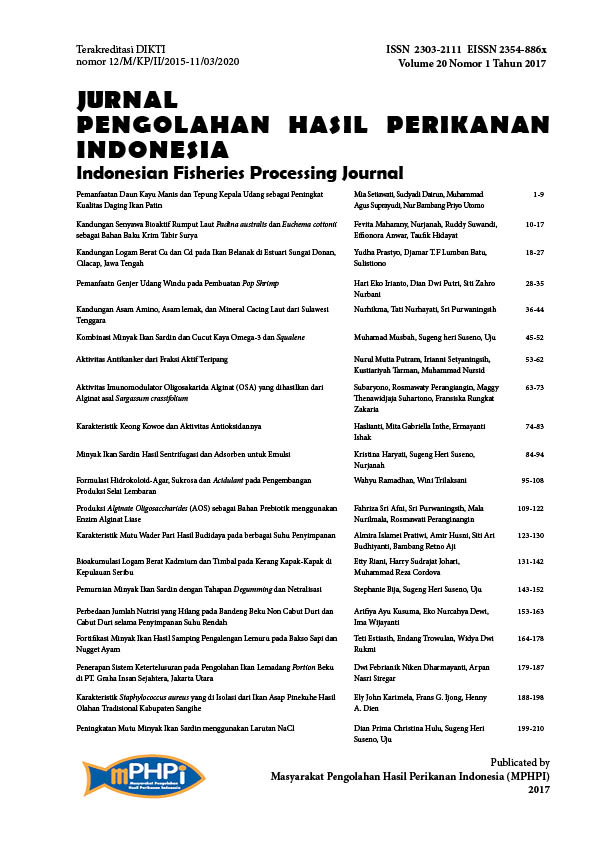Fortification of Sardine Fish Oil from By-product of Canning Processing into Beef Meatball and Chicken Nugget
Abstract
One source of ω-3 fatty acids is a by-product of lemuru canning processing that can be used for fortification. Generally, fortification uses fish oil microcapsule but it is more expensive than direct fortification. In this study, fish oil from a by-product of lemuru canning processing was directly fortified into beef meatball and chicken nugget at concentration of 0, 2, 4, and 6% (w/w). Oxidation level, free fatty acid content, colour, lightness, texture, and sensory acceptance by triangle difference test were analyzed. The results showed that oxidation level of nugget was higher than meatball. Free fatty acid content increased in nugget by increasing fortification level, but it was decrease in meatball. Texture of both was relatively unchanged, with a tendency to increase in nugget and decrease in meatball. Lightness (L) of meatball surface was higher than nugget surface. Lightness did not significantly change by increasing fortification level. Redness (+a) and yellowness (+b) of meatball and nugget changed significantly by fortification. Difference test showed that fortification level of 2% was the highest level of fortification that taste and odor could not be distinguished with control by panelists. Best level of fish oil fortification was 2%. At 2% fortification, EPA was 2.85% for meatball, and 2.22% for nugget. Sharp decline was occured in EPA and the decrease was
higher in nugget than meatball.
higher in nugget than meatball.
Authors
EstiasihT., TrowulanE., & RukmiW. D. (2017). Fortification of Sardine Fish Oil from By-product of Canning Processing into Beef Meatball and Chicken Nugget. Jurnal Pengolahan Hasil Perikanan Indonesia, 20(1), 164-178. https://doi.org/10.17844/jphpi.v20i1.16504
Authors who publish with this journal agree to the following terms:
- Authors retain copyright and grant the journal right of first publication with the work simultaneously licensed under a Creative Commons Attribution License that allows others to share the work with an acknowledgement of the work's authorship and initial publication in this journal.
- Authors are able to enter into separate, additional contractual arrangements for the non-exclusive distribution of the journal's published version of the work (e.g., post it to an institutional repository or publish it in a book), with an acknowledgement of its initial publication in this journal.





